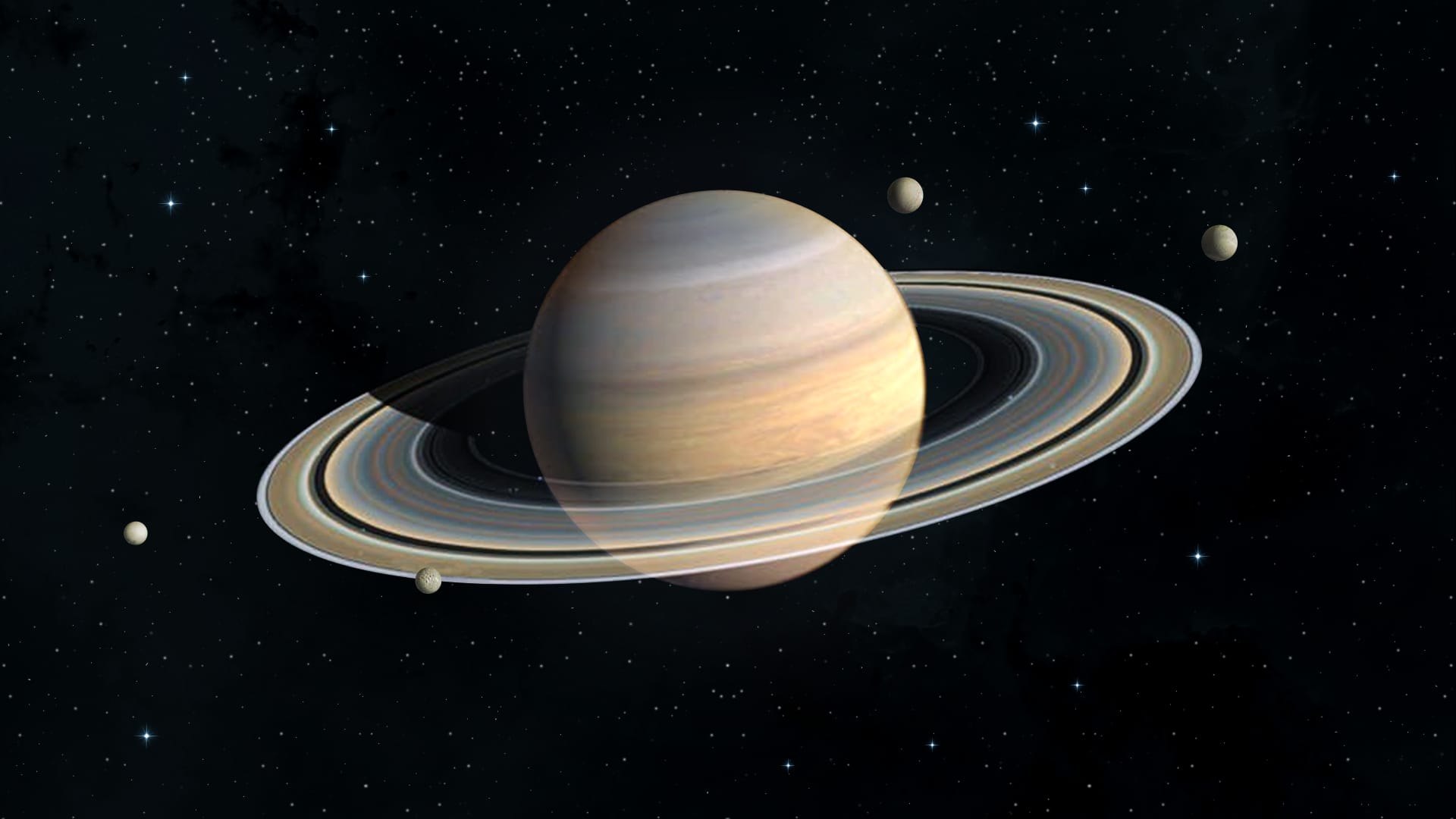Saturn, the second-largest planet in our solar system, is perhaps best known for its spectacular rings. These rings are made up of countless particles of ice and rock, ranging in size from microscopic grains to boulders. Saturn is also home to a large number of moons, including Titan, the second-largest moon in the solar system.
Physical Characteristics
- Size: Saturn is slightly larger than Uranus and Neptune and has a mass more than 95 times that of Earth.
- Composition: Like Jupiter, Saturn is a gas giant composed primarily of hydrogen and helium. However, Saturn has a lower density than Jupiter due to its higher proportion of lighter elements.
- Rings: Saturn’s rings are one of its most distinctive features. They are thought to be the remnants of a moon that was torn apart by the planet’s tidal forces. The rings are divided into several major divisions, including the A ring, B ring, and C ring.
- Magnetic Field: Saturn has a strong magnetic field, similar to Jupiter. This field is generated by the planet’s rapid rotation and its liquid metallic hydrogen core.
Moons of Saturn
Saturn has 83 known moons, making it the planet with the most moons in our solar system after Jupiter. Some of Saturn’s most interesting moons include:
- Titan: The largest moon of Saturn, Titan is the only moon in the solar system with a dense atmosphere. It has lakes and rivers of liquid methane and ethane, and it may be a potential habitat for extraterrestrial life.
- Enceladus: Enceladus is a small moon with a smooth, icy surface. It is known for its geysers, which erupt water vapor and ice particles into space. These geysers may indicate the presence of a subsurface ocean, making Enceladus another potential target for the search for life.
- Mimas: Mimas is a small, icy moon with a large crater named Herschel. This crater is so large that it nearly covers the entire moon.
Exploration of Saturn
Saturn has been visited by several spacecraft, including the Pioneer 11 mission, the Voyager 1 and 2 missions, and the Cassini spacecraft. The Cassini spacecraft orbited Saturn for 13 years, providing detailed observations of the planet, its rings, and its moons.
Future missions to Saturn may focus on exploring Titan and Enceladus in more detail, searching for signs of life and studying the potential for habitability. Scientists are also interested in studying Saturn’s rings and its magnetic field.
Saturn is a fascinating planet with a rich history and a bright future. As we continue to explore this gas giant, we may gain new insights into the formation of our solar system and the potential for life beyond Earth.
